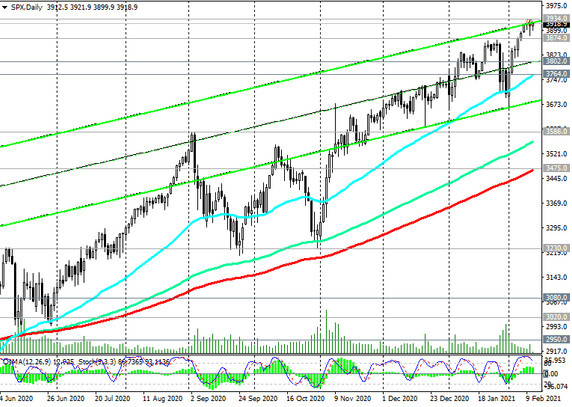Federal Reserve Chairman Jerome Powell has once again tried to calm market participants and allay their doubts about the strong commitment of the US central bank to continue pursuing super-soft monetary policy. Powell signaled last Wednesday that monetary stimulus will continue for a long time and hinted that monetary policy could be even softer than investors expect. Powell stressed that the labor market is still not recovering from the blow of the pandemic. "This will require the efforts of the entire community, all government agencies and the private sector", Powell said. He believes that the economic prospects are "under threat". This is due in part to slower vaccinations and new mutations in Covid-19, and the Fed should provide protection against these risks, Powell said. According to him, the Fed in the near future is unlikely to "even begin to think about curtailing support" by raising rates or reducing bond purchases. Powell also reiterated his call on the US government to further expand fiscal support for the economy, while reassuring his listeners about the risks of rampant inflation.
American stock markets generally reacted positively to Jerome Powell's speech, and today the major US stock indexes are rising again, recovering from yesterday's fall amid disappointing US consumer inflation data for January, published at the beginning of yesterday's American trading session.
Equities continue to receive support from aggressive stimulus policies from the Fed and the US government.
At the same time, Powell's comments confirm the opinion of the majority of financial market participants that it is too early for a stable recovery of the dollar on expectations of tightening monetary policy, despite the growth in yields on US government bonds. Thus, the yield on 10-year US Treasury bonds increased from 1.071% at the beginning of last week to 1.137%.
However, in this situation, this growth should be perceived rather as a persisting propensity of investors to buy risky stock market assets, rather than a desire to withdraw funds into the dollar.
Concerns about the US debt burden and the size of the current account deficit of the balance of payments will also have a negative impact on the dollar in the medium term, economists say.
Futures on US stock indexes on Thursday also rise ahead of the release (at 13:30 GMT) of statistics on claims for unemployment benefits for the last week. The number of new applications is expected to decline for the fourth straight week (down to 757,000 from 779,000, 812,000, 914,000, 926,000 in previous weekly periods). This will indicate a more favorable situation in the labor market after a sharp rise in layoffs in early January.
In early European session today, S&P 500 futures are trading near 3920.0, up 0.92% from yesterday's local low of 3884.0. Since the end of March 2020, their upward dynamics have been preserved, and if the local and absolute maximum of 3934.0 is exceeded, the S&P 500 growth will most likely continue.






